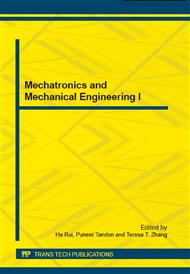p.170
p.175
p.185
p.191
p.194
p.199
p.204
p.210
p.215
Experimental Study on Downward Flame Spread of Rigid Polyurethane Foam with External Radiation
Abstract:
Research on building insulation materials and their safety is an important topic in the field of building energy conservation. The objective of this paper is to analyze the coupling effects of the width and external radiation on the downward RPU foam flame spread characteristics. The most important flame characteristics including flame height, mass loss rate, flame spread rate were studied experimentally. The results suggest that with increasing external radiation levels, flame spread rate was larger. Under the condition of the external radiation heat flux exceeds a critical level, the RPU foam would be deformed and detached from the board when the flame spread to a certain distance. It also leads to a much higher flame height due to sufficient combustion. Additionally, the flame propagation firstly accelerated when it reaches to a certain distance and then becomes a stable subject to the preheating of the external radiation heat resource.
Info:
Periodical:
Pages:
194-198
Citation:
Online since:
October 2014
Authors:
Price:
Сopyright:
© 2014 Trans Tech Publications Ltd. All Rights Reserved
Share:
Citation:


